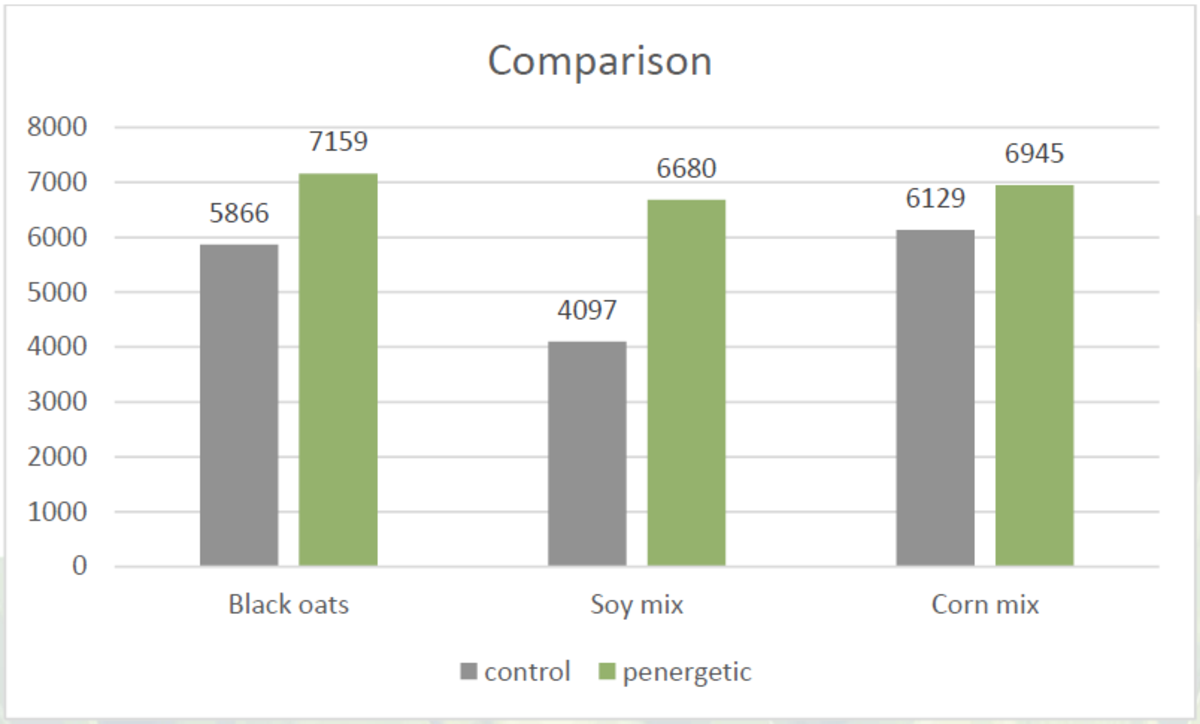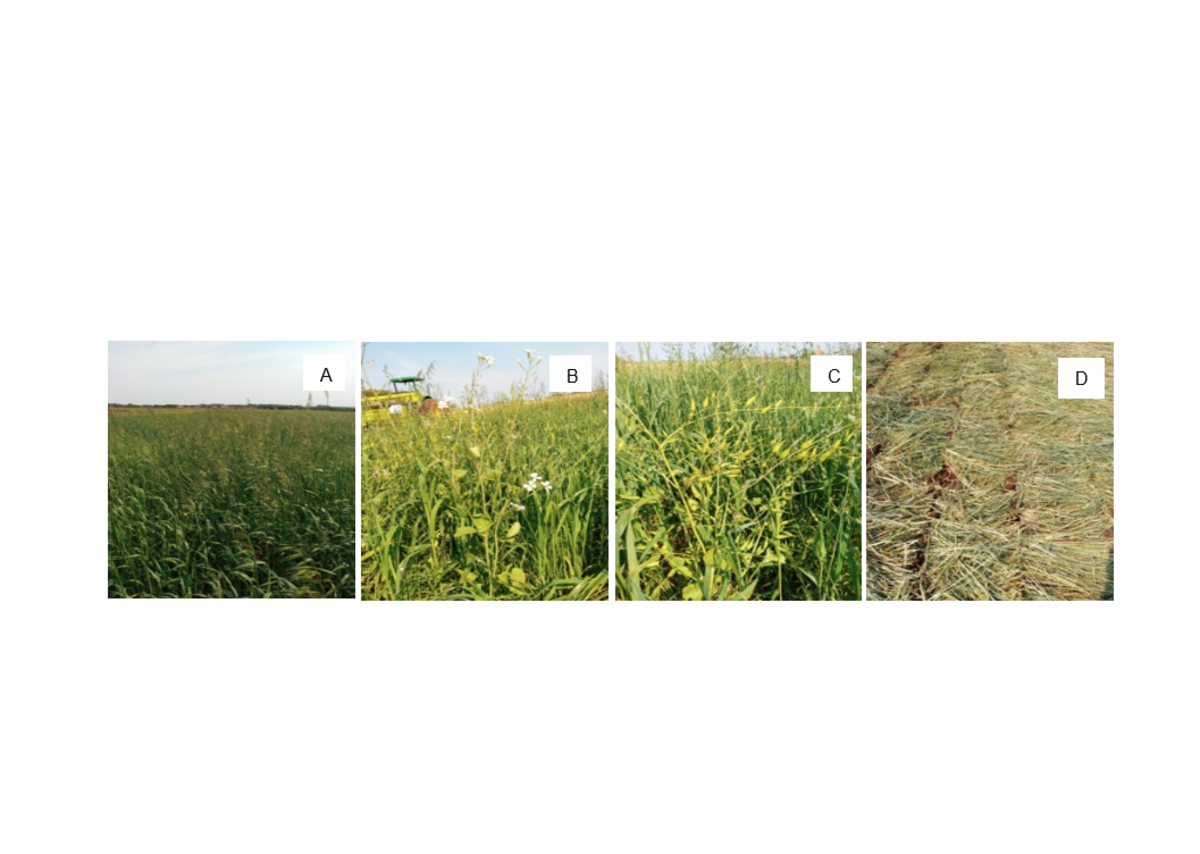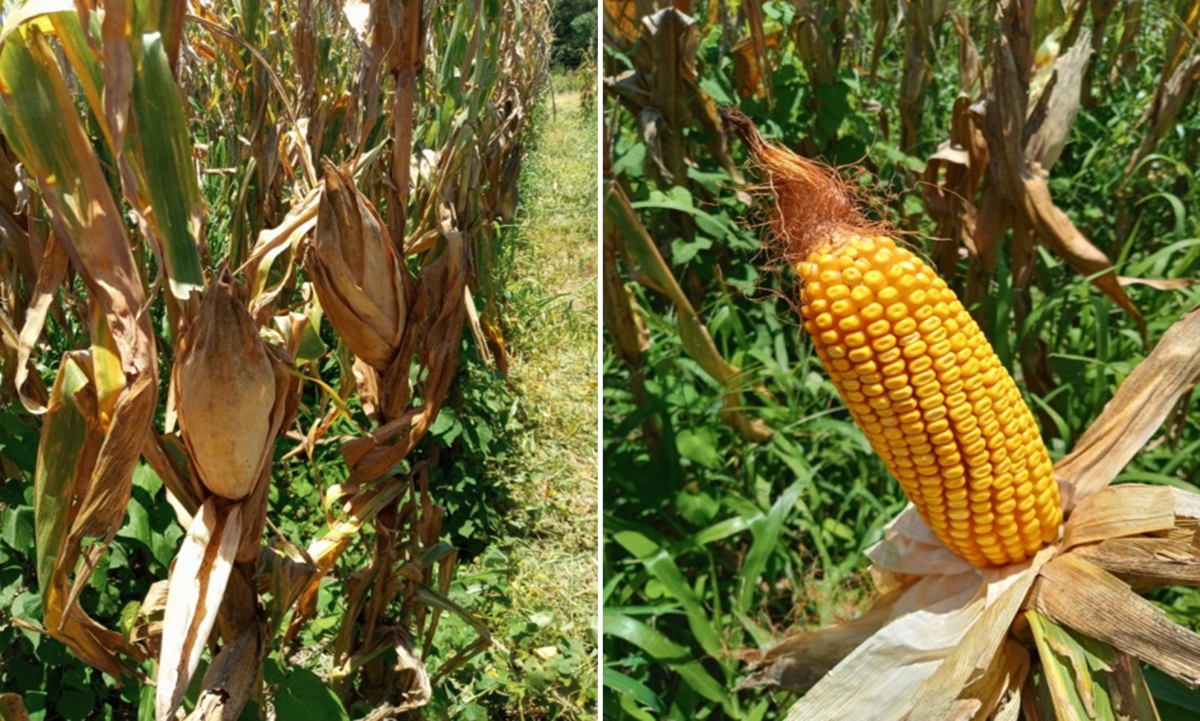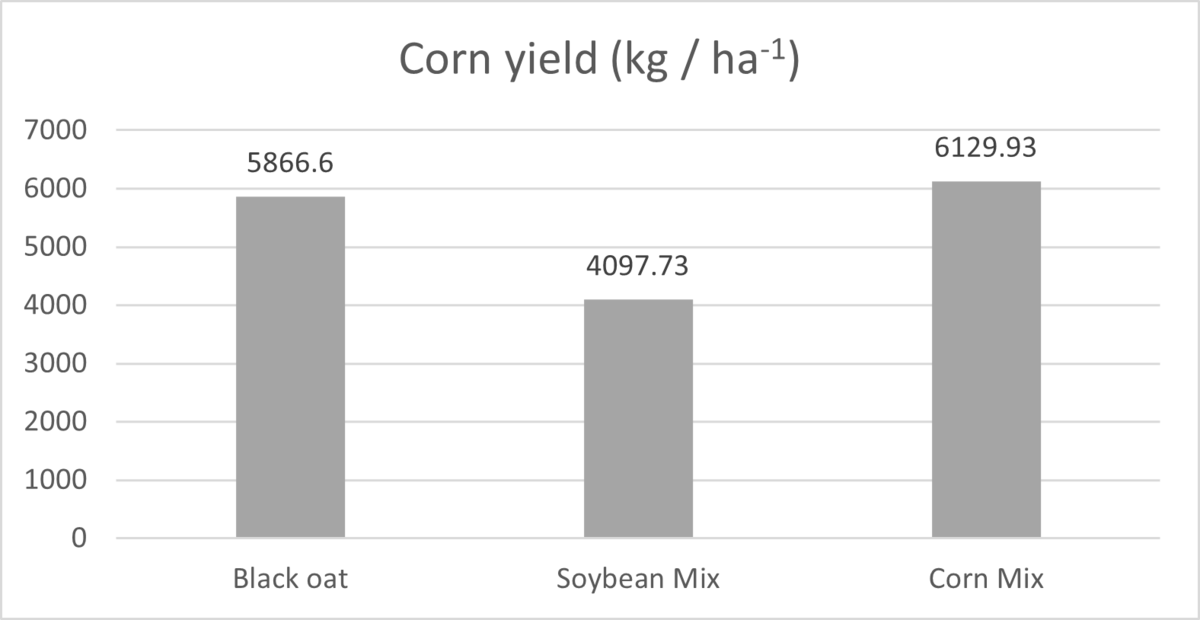Product(s)
penergetic b
penergetic p
Partner
Gerusa Steffen & Ricardo Steffen
Customer
Field Trials in Brazil
The positive effect of Penergetic when using cover crops
The positive effect of penergetic on the different mixtures of cover crops in this trial was significant (13-61% increase in yield).
The use of cover crops in the winter period (between the periods of crops with higher economic interest) leads to a significant increase in soil quality. Cover crops help maintain soil biology and they are very important for the regeneration of agricultural systems.

Increase of corn productivity provided by penergetic technology combined with cover
crops

Figure 1. Cover Crop for corn evaluation: Black oat (A), Soy Mix (B), Corn Mix (C) and green mass of plants at the time of corn seeding (D).
Methodology
The corn cultivation in a rotation system with winter cover crops was also evaluated in a field trial conducted in the Brazilian southern area. Pioneer P1225VYHR hybrid corn was seeded on three different cover crop treatments (Figure 1):
- Black oats
- Mix corn (RX110
- Mix soybean (RX210)
The Mix corn was used for soil cover prior to corn planting and consists of vetch, rye, black oats, and forage radish.
Whereas Mix soybean was used for ground cover prior to soybean or bean seeding and consists of rye, black oat, and forage radish.

Figure 2. Corn plants at harvest time 140 days after seeding.
The soil is classified as Nitisol. Corn seeding was carried out under the straw of various cover crops previously dried.
The three varieties were arranged in side-by-side blocks, each block consisting of 28 rows of corn 45 m long and 14 m wide with 0.5 m spacing. The seeding density was 3.3 seeds per linear meter, resulting in 66,000 plants per hectare. At the time of seeding, basal fertilization was applied with 373 kg ha-1 NPK 5:20:20 formulation at a depth of 3.5 to 4 cm.
The Penergetic technology was applied only in corn cultivation
- penergetic b was applied one week before seeding at a dose of 500 grams per hectare.
- penergetic p was applied in the 4-leaf stage (V4) at a dose of 500 grams per hectare.
Corn grain yield was harvested 140 days after seeding (Figure 2), by mechanized harvesting of four replicates per block, corresponding to a yield of five square meters (five linear meters and one meter wide).
Results
The use of cover crops in the winter period (between the periods of crops with higher economic interest) leads to a significant increase in soil quality. Cover crops help maintain soil biology and they are very important for the regeneration of agricultural systems. The application of cover crops during the winter period provides the release of root exudates which stimulates microbial activity. This maintenance of soil biology results in a greater diversity of organic compounds in the surface layers of the soil (up to 10-12 cm deep). The richness of exudates in the surface soil layer is fundamental for supporting highly fertile soils that can guarantee high yields.

Figure 3. Corn (Pioneer P1225 VYHR hybrid) under different cover crops. Black Oats: only black oats. Soybean Mix: rye, oats and forage turnip. Corn Mix: common vetch, rye, oats and forage turnip.
It all depends on the right mix
The range of cover crops used (different winter mix) resulted in differences in corn yields (Figure 3). The right composition of the cover crop mixture is crucial for a significant increase in productivity. In this case, we can observe that the corn mixture (vetch, rye, oats, and fodder beet) can protect the soil, keep nutrients in circulation, and provide nitrogen in the soil.
Vetch is a legume species that fixes nitrogen from the air directly into the soil, making the nitrogen available for subsequent crops. The combination of properties and benefits offered by this mixture has led to an increase in crop productivity.

Figure 4: Yield comparison with different cover crop mixtures, each with and without Penergetic
Significant increase in corn productivity with any cover crop mixture with Penergetic
The use of Penergetic technology provided a significant increase in corn productivity for each cover crop mixture evaluated (Figure 4). The effect of using Penergetic resulted in increased root volume and higher nutrient concentration in the plants. The consequent greater grain filling was more evident with the cover crop and soil biostimulation (Penergetic) combination.
There are few technologies that allow to increase the productivity of agricultural crops without damaging part of the complex structures that the soil presents. Penergetic is very efficient in this point. Penergetic can increase the quality, productivity and vitality of plants, and restore the quality of soils by increasing the biodiversity in the system and enhancing the interactions between microorganisms and plant roots.
Increase in corn yields by 13 to 61 % compared to the use of cover crop mixtures without Penergetic
It was found that Penergetic technology enhanced the positive effect of cover crop mixture use on increasing corn yield. The Penergetic technology contributed to an increase in corn yields of 13 to 61 % compared to the use of cover crop mixtures without Penergetic (Figure 4). These results show the importance of combining different technologies and management practices aimed at regenerating agricultural soils.
Below you can download the complete study.